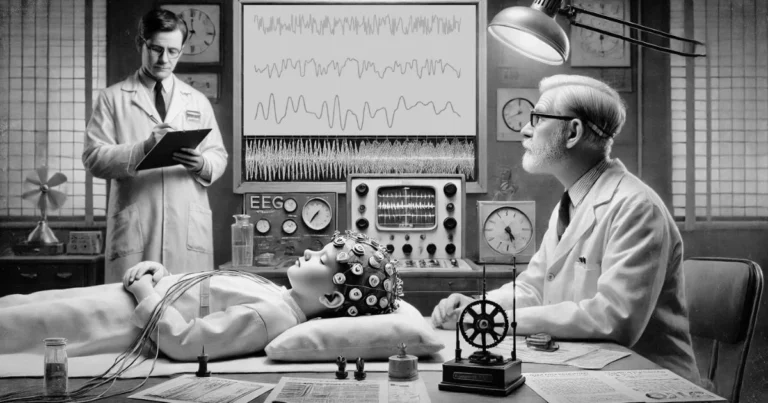Inside the brains of unremorseful killers: Neuroscience behind empathy-free violence
On July 22, 2011, Norway was rocked by one of its most shocking terrorist attacks. Anders Behring Breivik, a committed extremist, carried out twin attacks in Oslo and on the island of Utøya, resulting in the deaths of 77 people, mostly teenagers. During his trial, he displayed chilling detachment, showing no remorse. His demeanor raises a disturbing question: how can a person carry out a massacre with such emotional coldness? Was his empathy entirely overridden by ideology, or did he suffer from a specific neuropsychological disorder?
Can someone truly kill without feeling emotion? Which brain structures are implicated in the absence of empathy? Is there a difference between impulsive and meticulously planned violent offenders? Although certain brain abnormalities are linked to antisocial behavior, can they fully explain the decision to kill?
This article delves into the neuroscientific and psychological foundations of empathy-less violence. By drawing on neurocriminology and psychology research, we aim to understand how individuals can kill without guilt, and what this means for ethics and justice.
Psychopathy and lack of empathy: a neurological and psychological disorder?
Total absence of remorse and empathy in some criminals is both fascinating and terrifying. How can someone take a life without a hint of guilt? Part of the answer lies in psychopathy, a condition marked by profound emotional deficits and indifference to the suffering of others.
Psychopaths are characterized by emotional coldness, manipulation, impulsivity, and lack of fear. These traits correspond to specific brain alterations. The ventromedial prefrontal cortex, which regulates emotion and impulse control, often shows reduced activity in such individuals (Yang & Raine, 2009). Diminished function in this region weakens their ability to restrain inappropriate or aggressive behavior, undermines moral reasoning, and impairs long-term consequence evaluation (Raine et al., 2000). Moreover, reduced activation limits the integration of emotions in decision-making, explaining why some psychopaths can commit violent acts without remorse (Koenigs et al., 2011).
The amygdala, essential for recognizing and responding to emotions, is also underactive. This impairs their ability to feel fear or perceive distress in others, reinforcing emotional indifference. Neuroimaging studies consistently link these anomalies to violent criminals, raising crucial questions about moral and legal responsibility.
Moral judgment and emotional desensitization
If a psychopath’s brain is wired differently, how does that affect moral decision-making? Why can some individuals commit violent acts without hesitation, while others are paralyzed by guilt?
Neuroscience reveals that moral choices stem from a balance between reason and emotion. The prefrontal cortex evaluates consequences rationally, while the amygdala and insula inject emotional responses during moral dilemmas. In psychopaths, this balance is disrupted: their underactive amygdala fails to trigger typical emotional responses to others’ suffering, making their decisions starkly rational (Koenigs et al., 2007).
🔗 Read also: Exposing Authority’s Dark Side: Revisiting the Stanford Prison Experiment
This emotional void often leads to progressive desensitization. Neuroimaging shows that repeat offenders exhibit reduced insula activation, critical for feeling disgust and perceiving others’ pain. Consequently, they remain unmoved by suffering or guilt.
These deficits explain why some kill without remorse. If their brain sends no signals of guilt or aversion, what then restrains them from acting?
Impulse control: When behavioral inhibition breaks down
If lack of empathy and guilt lowers the threshold for violence, what about those who kill in the heat of the moment? Why do some individuals succumb to violent impulses, while others resist?
Self-control relies on a delicate interplay: the amygdala triggers strong emotions like anger and fear, while a functioning prefrontal cortex moderates them. When provoked, the amygdala responds, but a healthy prefrontal cortex inhibits aggression and encourages reflection (Tremblay, 2016).
In impulsive offenders, this regulation fails. Hypoactive prefrontal control undermines their ability to suppress violent impulses, making anger or frustration uncontrollable. This dysfunction is especially prevalent in those with repeated violence or early stress, whose brains learn to overreact to perceived threats. In contrast, calculated psychopaths, though devoid of empathy, maintain prefrontal regulation, enabling them to coldly plan their crimes.
Thus, some kill without emotion, while others kill because they cannot control themselves. But can brain dysfunctions alone explain all criminal behavior? We must also examine environment, upbringing, and life experiences.
🔗 Explore further: Ideology redefined: The inner evolution of how we think
Neuroscience and crime: Toward a deeper understanding of empathy-free criminals
Brain dysfunctions may explain lack of remorse and impulse control deficits, but how far can neuroscience go in analyzing criminal behavior? Can we truly distinguish a “criminal brain” from a “normal” one?
Neuroimaging has shown clear correlations between specific neurological abnormalities and violent behavior. For instance, reduced prefrontal activity is linked to impaired inhibitory control and poor foresight (Roullet, 2014). Individuals with such patterns often act without considering long-term consequences. Conversely, overactive amygdala heightens emotional responses, making some more prone to provocation and aggression.
Neurocriminology studies also highlight distinct brain profiles among serial killers, violent psychopaths, and impulsive offenders. Psychopaths exhibit low amygdala reactivity and weakened connectivity with the prefrontal cortex, reducing empathy and inhibitive emotion, while impulsive criminals show hyperactive emotional centers and poor frontal regulation.
These findings raise a critical question: are these anomalies innate or acquired? Research indicates while genetic predispositions exist, environmental factors play a significant role. Childhood marked by violence, emotional neglect, or trauma can permanently alter neural circuits responsible for emotion regulation.
Studying criminals’ neural bases enhances our insight and opens avenues for prevention and intervention prior to the act. Still, these findings ignite ethical and judicial debate: should neuroscience inform sentencing or predict violent behavior?
🔗 Discover more: Falling down: when one man’s collapse mirrors a society in crisis
Neuroscience and justice: Can we judge neuro-atypical criminals like ‘normal’ individuals?
If neuroscience deepens our understanding of violent behaviors, can it also influence how justice systems treat offenders? If an individual has impairments to impulse control or empathy, should they be judged like neurotypical defendants?
This question fuels growing ethical and legal debates. Neurological defenses, claiming brain dysfunction alters free will or moral judgment, have emerged in courtrooms. Notable cases include defendants who released aggressive tendencies when their prefrontal tumors were intact, and whose aggression vanished following surgery. This raises uncomfortable questions about responsibility when the brain malfunctions.
Neurocriminology confirms that some offenders display marked brain deficits, like prefrontal hypoactivity and disrupted amygdala connectivity that impair impulse control and moral sensitivity. However, anomalies are not destiny: many with similar brain patterns never turn to crime. Environmental factors, education, social context, life experiences, are decisive.
Legally, this leads to two dilemmas:
- To what extent should neuroscience mitigate criminal responsibility? Does discovery of a cerebral anomaly warrant reduced sentencing, or even acquittal?
- Should justice systems use neuroscience to predict recidivism and personalize sentencing? Some experts advocate employing brain imaging to assess reoffense risk and direct offenders to targeted rehabilitation.
Concurrently, neuroscience offers new therapeutic strategies: brain stimulation or cognitive-behavioral therapy may enhance impulse control and emotion regulation in at-risk individuals. Neuroplasticity, the brain’s ability to adapt, suggests targeted interventions could reduce violent behavior.
Yet these advances raise ethical concerns. If justice uses neuroscience to forecast criminality, might we edge toward dystopian “precrime,” echoing Minority Report? How far can prevention go before it infringes upon personal freedom?
Ultimately, the pressing question is not whether criminal brains differ from typical brains, but how justice systems should accommodate those differences. In time, courts may increasingly wrestle with the boundary between individual responsibility and biological determinism.
🔗 Read also: From breaking point to breakthrough: How crises shape us
Between shadow and light: Two faces of psychopathy
Psychopathy is neither a predetermined path to crime nor a promise of success. It exists in two extremes: on one hand, the “successful” psychopaths, masters of manipulation, who thrive in high-powered environments by wielding cold charm and ruthless ambition. On the other hand, the criminal psychopaths, enslaved by impulses, collide with violence-driven behaviors that frequently lead to their downfall.
Whether strategists or impulsive predators, they share a stark truth: they move forward without remorse, absent the moral compass that restrains most people. Society itself may shape these divergent trajectories, offering legal routes to some, while relegating others to marginalization and incarceration.
In conclusion, psychopathy is not destiny, it is a prism of possibilities, spanning from calculated genius to the tragedy of impulsive rupture.
References
Blair, R. J. R. (2007). The amygdala and ventromedial prefrontal cortex in morality and psychopathy. Trends in Cognitive Sciences, 12(9), 387-392.
Greene, J. D., Sommerville, R. B., Nystrom, L. E., Darley, J. M., & Cohen, J. D. (2001). An fMRI investigation of emotional engagement in moral judgment. Science, 293(5537), 2105-2108.
Hare, R. D. (1993). Without Conscience: The Disturbing World of the Psychopaths Among Us. The Guilford Press.
Koenigs, M., Baskin-Sommers, A., Zeier, J., & Newman, J. P. (2011). Investigating the neural correlates of psychopathy: a critical review. Molecular psychiatry, 16(8), 792–799.
Patrick, C. J., Bradley, M. M., & Lang, P. J. (1993). Emotion in the criminal psychopath: Startle reflex modulation. Journal of Abnormal Psychology, 102(1), 82-92.
Raine, A., Lencz, T., Bihrle, S., LaCasse, L., & Colletti, P. (2000). Reduced prefrontal gray matter volume and reduced autonomic activity in antisocial personality disorder. Archives of General Psychiatry, 57(2), 119-127.
Tremblay, R. E. (2016). The development of physical aggression from early childhood to adulthood: A neurodevelopmental perspective. Neuroscience & Biobehavioral Reviews, 71, 167-173.
Yang, Y., & Raine, A. (2009). Prefrontal structural and functional brain imaging findings in antisocial, violent, and psychopathic individuals: A meta-analysis. Psychiatry Research: Neuroimaging, 174(2), 81-88.

Amine Lahhab
Television Director
Master’s Degree in Directing, École Supérieure de l’Audiovisuel (ESAV), University of Toulouse
Bachelor’s Degree in History, Hassan II University, Casablanca
DEUG in Philosophy, Hassan II University, Casablanca







